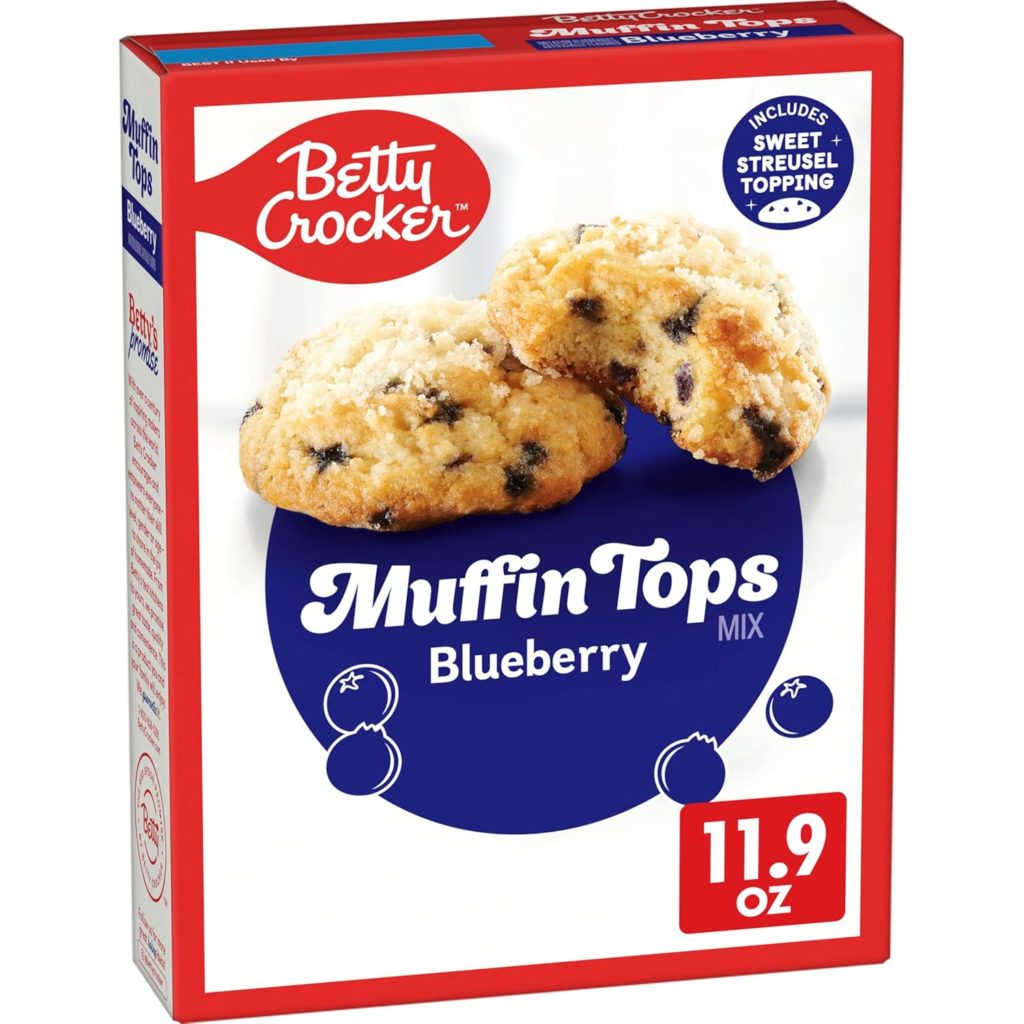Several people have said to me: “The blueberries in your muffins taste funny”, and I know why they say it. It’s because most of the blueberry muffins sold in supermarkets are made with fake blueberries, and I use real blueberries. Until I started making blueberry muffins, I didn’t realize how many blueberry muffins are made with fake blueberries. Sadly, a lot of people have never eaten a blueberry muffin with real blueberries in it.
Imitation Blueberries. Most supermarket blueberry products are made with imitation blueberries. It isn’t just the cheap brands either, like Jiffy Blueberry Muffin Mix, which sells for under $1 a box. It’s also the higher priced brands, like Kellogg’s Blueberry Mini Wheats cereal. It’s also made with fake blueberries. You also can’t tell if a product advertised as health food is made with real or fake blueberries. General Mills Total Blueberry Pomegranate Cereal sounds healthy, doesn’t it? But it contains no real blueberries or pomegranates.
Don’t Rely on Brand Names. Some well-known companies put real blueberries in some of their blueberry products and fake blueberries in other products. For example, Betty Crocker Blueberry Muffin mix can be found in supermarkets everywhere. It comes packed in either a pouch or a box. The pouch and the box look almost the same, but Betty Crocker Blueberry Muffin mix that is packed in a pouch is made with imitation blueberries, but Betty Crocker Blueberry Muffin mix that comes in a box is made with real blueberries. There is a tin of real blueberries in the box. A third product, Betty Crocker Blueberry Muffin Tops mix is also made with fake blueberries, and it comes in a box. Confusing, isn’t it? Remember that blueberries are a relatively expensive ingredient, so whenever you buy blueberry products in a supermarket, read the ingredients label.
MAKING THE MOST OF A SMALL SPACE, PART 1
I wrote the article below for the current issue of the Berkeley landlord association newsletter, but you might find this information useful too.
In a city like Berkeley, where rents and construction costs are high, a landlord should always be thinking about how he can create more usable space and make his units look and feel bigger at minimal cost. Here are some ideas that I have learned over the years.
PAINT everything light colors. It’s unimaginative, but it really does make small rooms feel bigger! That doesn’t mean that you should paint everything white-white. Ceilings should be white, but your walls can be a soft, warm, light color. Dark places, like the inside of closets and cabinets should be painted semi-gloss. Semi-gloss reflects light and lasts longer in places like closets.
PROPORTION. Big things in small rooms make those rooms feel even smaller than they are. Avoid large light fixtures, floor coverings with big patterns, big built-ins and big appliances in small rooms.
CLOSETS. 60% of the space in the average closet is wasted. Closet organizers and shelving is cheap. A second shelf in part of a bedroom closet doubles the amount of usable space in that area. You can get some good ideas about how to best use closet space by going to Google images and looking at what other people are doing.
WINDOW COVERINGS. Always get inside-mount mini blinds. They allow furniture to be placed right up against the wall. Curtains and drapes make an apartment look dated, and they need more space than mini blinds to move and bunch up. Also, remember that people with allergies and respiratory diseases like asthma don’t want curtains or drapes or carpets. The number of people with allergies is rising. That really is happening. It’s not just your imagination. Curtains and drapes are dust magnets. They hold dust, pollen, and dander almost forever. If you have drapes, when was the last time you washed them? Most people have never washed them.
LAMPS. If you have a room with no ceiling light, remember that wall-mounted lamps take up no floor space. Hanging light fixtures in small rooms will make the rooms feel even smaller.
IN-THE-WALL. If you own an old building, think about hidden spaces that may be inside your walls. Can you open up a wall and use hidden space inside? You might be surprised how common this is in old buildings. I once found a 60 square foot space sealed in a wall in an old building I own. I removed the wall and by adding the space to some unused space on the other side, I was able to turn a spacious 3-bedroom apartment into a spacious 4-bedroom apartment!
TALL BUILT-INS. A tall bookcase or wall cabinet uses the same amount of floor space as a short one. Go to Ikea to get ideas! Most of their furniture was designed for the European market, where apartments tend to be smaller than American apartments. I am constantly seeing things at Ikea that give me ideas. We are fortunate that we have an Ikea store right here next to Berkeley. Walk through their furniture section slowly. Even if you aren’t in the market for furniture right now, you’ll get ideas.



